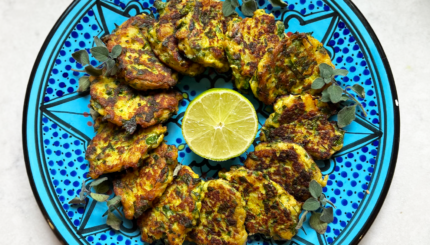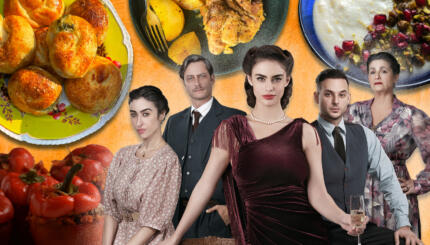The penultimate verse of Eicha (Lamentations), traditionally read during Tisha B’av, tells us how to prepare for the high holidays; turn.
Hashiveinu Adonai elecha
Venashuvah, hadeish yemenu k’kedem
Take us back, O Lord, to Yourself, And let us come back; renew our days as of old.
The words hashiveinu and venashuvah share the same root, shuv, or turn. During Elul, we turn inward and take stock of who we were, ways in which we missed the mark, and make amends with those we’ve wronged during the year. During Rosh Hashanah and Yom Kippur we turn to God for restoration and to atone (teshuvah). After hearing the shofar on Rosh Hashanah we say Hayom Harat Olam, often translated as “Today is the birthday of the world”. Hidden in this phrase is a clue, that acts of shuv are also acts of creation.
The clue is harat, which though we often translate as “birth”, its root (hara) is “conceive” which is an important distinction. My path to Judaism began with the mystical tradition of Kabbalah, which teaches us that before God could begin the work of creation described in Genesis, God had to condense itself (tzimtzum) and pour its light into a vessel which, ultimately shattered, spreading sparks of light (hereafter called god-sparks), after which, God could complete the work of creation. I believe that each of us contains a god-spark, and we create light with this spark by engaging in mitzvot and acts of tikkun olam. When we turn inward to reflect and turn to God for teshuvah, we engage with the spark.
The week before Rosh Hashanah, we read Parsha Nitzavim, which inspired one of my favorite midrashic teachings:
Deuteronomy 29:13-14
“I make this covenant, with its sanctions, not with you alone, but both with those who are standing here with us this day before the LORD our God and with those who are not with us here this day.”
The midrash says, “every soul, from Adam to the end of the world, was formed during the six days of creation, and that all of them were present in the Garden of Eden and at the time of the giving of the Torah.” As a Jew by Choice, this teaching continually affirms that Torah and the full breadth of Jewish practice includes me, because my queer and black soul is also a Jewish one and always was.
As someone who holds multiple, sometimes competing, identities, I often ask myself, “What does my queer, black Judaism look like and how do I embody it?”. I’ve never felt that I had to assign “Jewish” to any of my other identities, but that within Judaism, I have a vessel in which to explore all of them. Still, in a world of binaries, embodying queer and black; black and Jewish; or queer and Jewish, is simpler.
This year, I’m reflecting on ways in which queer, black Judaism has manifested itself in my own practice. It has meant marching in a Jews for Black Lives action to the 6th Precinct, and reciting the Mourner’s Kaddish for lives lost to police brutality, once we got there.
It has meant sitting on panels about Jewish diversity and reminding clergy and other Jewish professionals that being a queer Jew of color means being visually identified as a person of color, regardless of queer and Jewish identity expression.
It means that when I recite the Mourner’s Kaddish, I recite it for queer people who have lost their lives to suicide and murder.
It means that when I affirm my sacred Jewish lineage by reciting the Amidah, that I also affirm my sacred queer lineage by remembering Sylvia Rivera, Stormé DeLarverie, Marsha P. Johnson, Miss Major, and the queer ancestors whose names have been lost to time.
This time of year brings along with it a sacred invitation to reflect on who we were in the past year, and also set our intentions for who we’d like to be and what we’d like to create in the coming year. My hope for all of us is that we continue creating and living a Judaism that’s as multifaceted as we are.
Ken yehi ratzon and Shanah Tovah!


